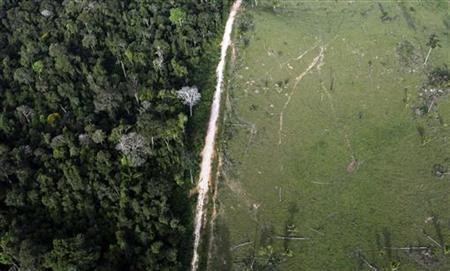Researchers recently found the tiniest frogs in the world, measuring only 0.4 inches, in the Brazilian Atlantic Rainforest. It is rare for the miniaturized frogs, which are part of the genus Brachycephalus, to exceed one centimeter as adults, according to the researchers.
Published in PeerJ, the study "Seven new microendemic species of Brachycephalus(Anura: Brachycephalidae) from southern Brazil" discussed the discovery of the tiny frogs by researchers Luiz F. Ribiero, Marcos R. Bornshein, Ricardo Belmonte-Lopez, Carina R. Firkowski, Sergio A.A. Morato and Marco R. Pie.
In a statement, which is published in Eurekalert, the researchers pointed out that the Atlantic Rainforest of Brazil harbors "a highly unique group of frogs" known as Brachycephalus that have fascinated naturalists for more than a century.
According to the researchers, the bright color of many species of Brachycephalus is likely to be a warning that their skin has tetrodotoxin, a highly potent neurotoxin known. The frogs are said to be among the smallest terrestrial vertebrates in the world.
Highly endemic to cloud forests, many of the tiny frog's species can be found only on one or a few mountaintops. It is likely that the climatic tolerance of the frogs to a narrow set of environmental conditions found only in montane regions causes such level of microendemism.
With the restriction and the difficulty of exploring the tiny frog's inaccessible habitats, the chance of discovering new species is very limited. Their highly endemic nature may be the reason why most species in the genus have been discovered only in the past decade although German naturalist Johann Baptist von Spix discovered the first species of Brachycephalus in 1842.



























